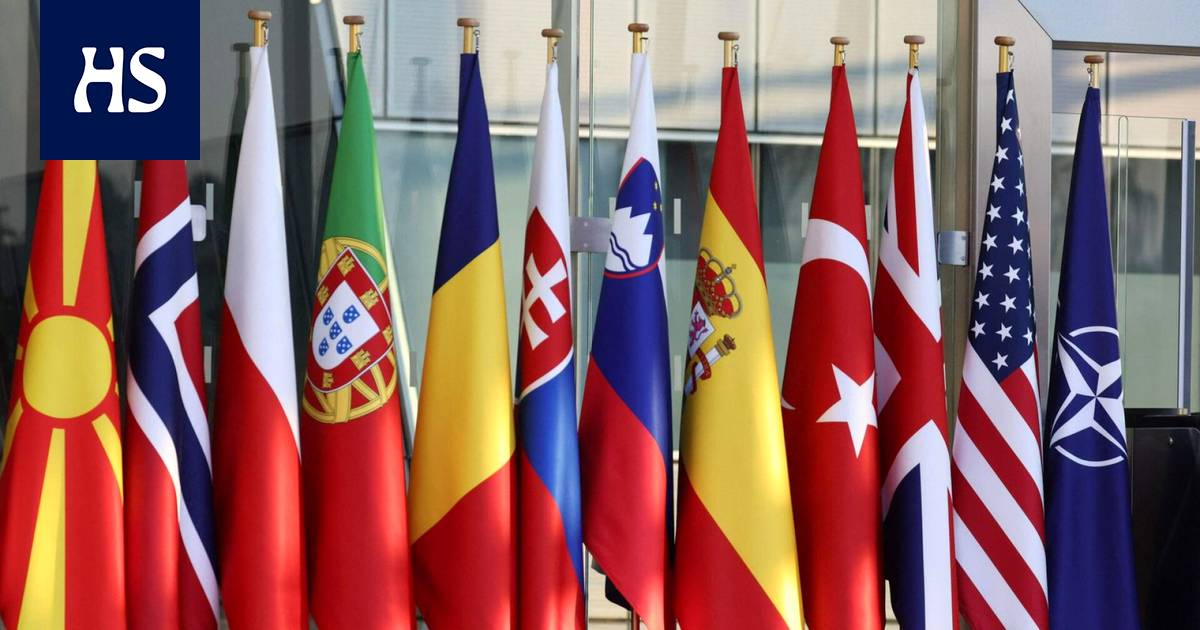Since the end of the Cold War and the break-up of the Soviet Union, NATO has had to find a new direction. This has led to the formation of various factions within the military alliance, the researchers interviewed by the HS say.
When In Finland, there is talk of a military alliance and NATO, and the debate often focuses on Article 5 of its charter and the defense of the territorial integrity of NATO member countries.
The fifth article is that an attack on one NATO country is an attack on the entire military alliance.
It is often overlooked in the debate that different member states of the military alliance have different security interests.
Professor of the National Defense College Tommi Koivula.
NATO the divergence of member states’ security interests began in the last years of the Cold War. Until then, NATO’s role had been clear: to defend itself against the Soviet Union and the Warsaw Pact in the Eastern Bloc.
After the break-up of the Soviet Union, a new situation was faced when the common image of the enemy disintegrated.
Professor at the National Defense College Tommi Koivula says finding a new unifying factor for the military alliance was not an easy task in the 1990s.
“There was some general debate even as to whether NATO as a whole should be abolished when the Warsaw Pact was abolished. It can be said that NATO then entered some sort of search period, ”Koivula describes.
“At that time, NATO organized, among other things, an aid operation for the victims of the Pakistan earthquake, protected the Athens Olympics, conducted a Mediterranean security operation. There was activity from side to side. ”
However, some kind of common vision of what NATO was still needed for after the Cold War had to be found.
“There are inevitably centrifugal forces in such a multi-member intergovernmental defense alliance. If there is no common agenda, there is a danger that the member states will pull it in different directions, ”Koivula explains.
New the direction for the military alliance finally began to be found in its activities outside the territories of its member states: crisis management and the war on terrorism.
The first significant steps in that direction were taken when NATO first used military force in Bosnia in 1995 and in 1999 in Kosovo during the Yugoslav wars of disintegration.
At the same time, it launched Partnership for Peace programs with non-military countries. Even Russia, which followed the Soviet Union, was part of NATO’s Partnership for Peace program from 1994 until, in 2014, NATO announced the cessation of all cooperation with Russia in the aftermath of the occupation of Crimea.
“Almost the entire northern hemisphere was part of NATO’s Partnership for Peace program. The idea at the time was that through these partnerships, NATO would help build peace and security in the northern hemisphere, ”Koivula describes.
Pete Piirainen, Senior Research Fellow, Institute of Foreign Policy.
Second a significant moment in NATO’s post-Cold War renewal was the 9/11 terrorist attacks on the United States. At that time, NATO members jointly decided to activate Article 5 of the NATO Treaty for the first time and to offer their support to the United States.
The attacks launched NATO’s counter-terrorism activities, which were concretely reflected in, among other things, peacekeeping operations in the Middle East.
In the eastern countries of NATO and also in Finland, NATO has often been considered to have sidelined since the end of the Cold War. Senior researcher at the Foreign Policy Institute Pete Piirainen describes that many have even seen the development as a mistake. However, he himself does not see this.
“Development took place quite naturally with changing circumstances. I do not see the possibility that after the end of the Cold War, NATO countries would have focused only on maintaining Article 5 of the Treaty and turned a blind eye to crisis management needs, ”says Piirainen.
He also adds that without this search period, the military conditions for Finland and Sweden to join NATO would not be at the same level.
“If NATO had not focused on crisis management since the late 1990s, it would not have needed peace partners like Finland. Finland would not have been able to form a co-operation capability with NATO countries without this crisis management activity, ”says Piirainen.
Research Director Hanna Ojanen from the University of Tampere.
Cold Indeed, since the war, various camps have developed within NATO with differing views on what the military alliance should focus on.
One of the clearest is the division into NATO’s eastern and southern members. Russia’s main security concern is Russia and its military threat. The focus of the southern Member States is on stability and security in the Mediterranean. Russia is not seen as the primary fear, but the terrorist threat posed by the unrest in North Africa.
“NATO has tried to build a balance so that these two concerns are quoted and the balance between them has been found quite well,” says Piirainen.
Adding to the equation is the United States, which has long seen NATO as playing a key role in maintaining peace through an active presence outside the military alliance.
“Before Russia’s current policy, whether it was primarily in Europe or elsewhere in the world was precisely the key NATO issue,” says the research director. Hanna Ojanen From the University of Tampere.
In 2014 Russia conquers the Crimean peninsula. Since then, and no later than the Russian invasion of Ukraine in February, the security concerns of NATO members have been a priority. moved east. Many NATO member states have considered the transition desirable.
The key security concerns of Russia in the eastern member states have received more attention than before. Among other things, as Russia’s aggression has intensified, NATO has deployed high-speed multinational combat units in Eastern Europe.
For example, it is in line with the objectives of France and Germany that the US-led presence of NATO outside Europe is no longer seen as such a key issue.
The accession of Finland and Sweden to NATO could further strengthen this development: the key security threat to both can be found in the East.
Turkish President Recep Tayyip Erdoğan has recently sought to benefit from Finland’s and Sweden’s aspirations to join NATO.
Disagreements nevertheless, NATO has managed to remain quite cohesive: unifying factors have always been found in the end, rather than distinctive ones. Turkey makes a small distortion here.
Turkey has not actually belonged to any particular camp in NATO, but has been a very peculiar member. Membership has been marked by various conflicts and disagreements with other Member States.
President Recep Tayyip Erdoğanin during the period the situation has become even more difficult.
According to Hanna Ojanen, however, Turkey’s NATO co-operation has been relatively stable compared to the rest of the country’s policy. This has been partly due to the fact that the Turkish armed forces have traditionally been pro-NATO and pro-Western.
However, there is no guarantee that stability will continue. During his reign, Erdoğan has sought to shape the country’s armed forces ideologically according to his own views, including through numerous personnel exchanges.
Development gained further momentum in 2016 when part of the Turkish armed forces attempted a coup in the country, prompting Erdoğan to further tighten its grip on them.
Neither The increasing focus of NATO on its eastern border may not please Turkey.
Firstly, it makes it difficult for the country to pursue a balanced foreign policy between Russia and the EU.
At a time when NATO was focusing more heavily on the fight against terrorism, Turkey was able to use the situation to advance its own interests.
For example, Turkey has invoked Article 4 of the NATO Treaty five times on the issue of terrorism. Throughout NATO’s history, this article has been used only seven times.
Under Article 4, a NATO member has the right to invite other members to negotiate if its territorial integrity, political independence or security is threatened.
“Based on these discussions, Turkey has received weapons from other NATO countries, including Patriot anti-aircraft missiles. However, the requirements have not always been passed, ”says Ojanen of the University of Tampere.
“Then, if the desired help is not received, then one can ask for help even from Russia and justify it with NATO’s refusal. In a way, Turkey has used the requirements as a game tool, even though there are real security concerns in the background, ”says Ojanen.
With safety concerns Ojanen means, in particular, Turkey’s fear that the Kurds would gain a stronger position in its neighboring countries and thereby seek to influence the position of the Kurdish minority in Turkey as well.
Although the fight against terrorism has become one of the unifying elements of NATO member states in the 21st century, it has not been a problem-free goal for the military alliance.
“It has been easy to see terrorism as something that can be talked about even in difficult countries,” says Ojanen, referring to Turkey, among others.
“When it doesn’t need to be specified, one might think that everyone is together against terrorism. But in practice, the situation is not easy when we start talking about whether terrorism should somehow be defined in general terms. Here we see that Turkey is finding these terrorists in a truly unique way. ”
#NATO #years #NATO #focus #Russia #Turkey #contradictions #NATO








